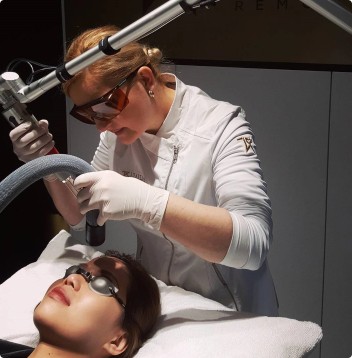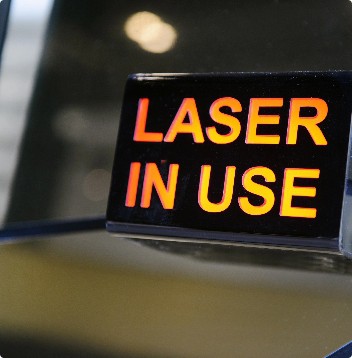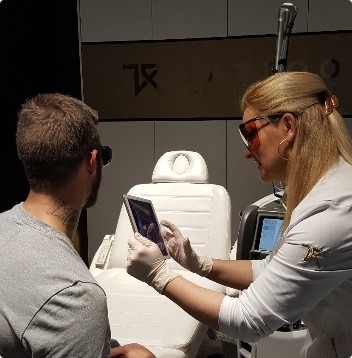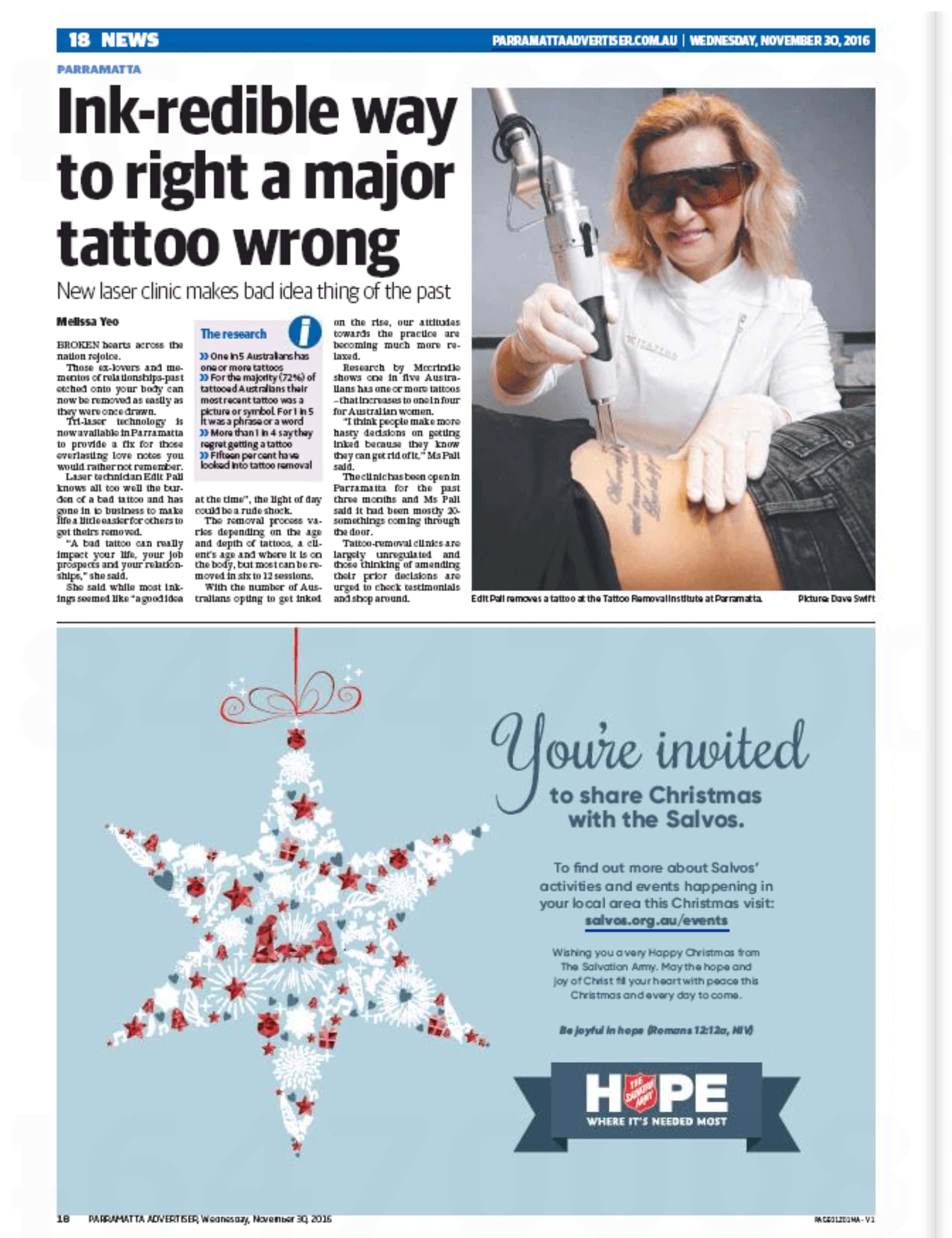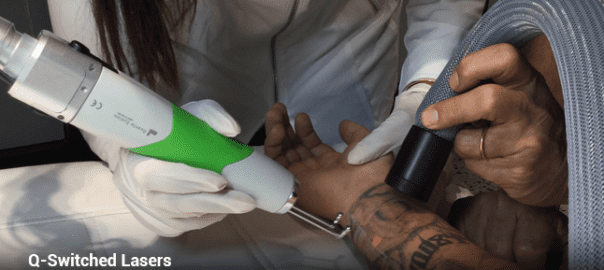While laser therapy is arguably the best way to have a tattoo removed, the equipment involved plays a big role - Q switch laser tattoo removal is considered the most superior in this category.
The journey of tattoo removal can be a long, tedious process, but the combination of the best equipment can not only speed up the process significantly but make the journey a more pleasant and manageable experience.
Q switched laser technology uses three different wavelengths during laser treatment. These wavelengths can target all tattoo colours effectively. What sets the Tattoo Removal Institute apart is that we boast the only machine that houses all three wavelengths in one singular machine.
So, if you’re looking to learn a bit more about how we use Q switched lasers to remove your tattoo, here’s what you need to know.
How Does Laser Tattoo Removal Work?
Regardless of the type of laser equipment used, the same basic process occurs during laser tattoo removal, so it’s worth having a basic understanding of the process before diving into Q switched lasers.
A tattoo removal laser sends out an extremely fast laser beam of light energy into the skin. This penetrates deeper than the top layer and can reach the dermal layer of the skin, where the tattoo ink particles are housed.
Each zap from the laser beam breaks the ink particle down into multiple smaller pieces.
The feeling of the laser beam hitting each spot has been compared to an elastic band snapping against your skin - quick and then over. Thankfully, however, most laser treatment sessions only last a few minutes, depending on the tattoo’s size.
A tattoo remains permanent because the tattoo ink particles are too large for the body to excrete. Laser tattoo removal treatments are used over time to break all the tattoo ink particles down into small enough fragments so that they can naturally be released from the body.
What is Q Switched Laser Technology and How Does It Work?
The “Q” in Q switched laser treatment stands for “quality.”
A Q switched laser pulses high power laser beams with such precision that they don’t have any thermal interaction with tissues. This means that it produces minimal damage to surrounding tissues internally and targets only the tattoo ink pigments. An added benefit of this is a quicker and less complicated healing time.
These Q switched laser pulses have different wavelengths that target different colours in tattoos. Warmer colours such as red, yellow, pink, orange and brown are housed more shallowly in the skin (nearer to the surface), requiring a shorter wavelength.
Conversely, darker colours are ingrained deeper in the skin and require longer wavelengths.
The unique laser system offered by the Tattoo Removal institute’s Q switched lasers incorporate the three laser systems configured in one machine:
- Nd: YAG
- Ruby
- Alexandrite
Nd: YAG Laser
These Q switched lasers support two wavelengths and subsequently two different groups of colour tattoo pigment. The shorter of the two has a wavelength of 532 nanometres (nm) for warmer colours like red, yellow, pink, orange, brown and even white.
Successful tattoo removal of darker tattoos with tattoo pigment colours of blue, purple, and black requires a longer wavelength during laser treatment, such as 1064nm, also supported by the Nd: YAG Q switched lasers.
Ruby Laser
The Q switched ruby laser has a wavelength of 694 nm, to be used on unusual tattoo pigments such as lime green and turquoise. It works particularly well on resistant shades of ink.
Alexandrite Laser
After treating a tattoo with the Nd: YAG Q switched laser, often the only colour remaining is dark green because it’s the most stubborn. This 755 nm wavelength is excellent for achieving complete removal of even those stubborn greens left behind.
Why Is Q Switched Laser Treatment Superior?
Another common laser tattoo method is by use of PicoSecond lasers.
While PicoSecond lasers produce satisfactory tattoo removal results, Q switched lasers are the superior technology for tattoo removal.
PicoSecond lasers only support ONE wavelength - 755nm. Like the Q switched Alexandrite laser, this wavelength works well for green, some black and blue tattoo pigment colours, and even some red.
But, light green and light blue are near impossible.
For the PicoSecond laser light to remove multicoloured tattoos, dye modules are used to convert the wavelengths to be different lengths appropriate for the different colour tattoo inks.
So, while they can reach wavelengths needed for different colour tattoo pigments, changing the wavelengths using dye results in significant power reduction.
On the other hand, Q switched laser tattoo removal can easily support all wavelengths from one single machine without compromising power.
What Are the Cons of Q Switch Laser Tattoo Removal?
Like any laser tattoo removal, Q switched lasers’ tattoo removal isn’t a quick-fix solution. Instead, it requires adequate aftercare and patience between sessions.
The Alexandrite Q switched laser, in particular, could result in hypopigmentation around the treatment site following treatment. This means that the skin could discolour temporarily.
Q switched laser tattoo removal generally can lead to blistering after treatment. Although blistering is considered a good thing as part of the healing process, it can be itchy, sore and unpleasant. In addition, not caring for blisters correctly can lead to significant scarring.
Depending on your pain tolerance, you may perceive Q switched laser tattoo removal to be painful. This is especially true if you have a large tattoo.
At the Tattoo Removal Institute, we try our best to minimise any pain by applying numbing cream and using our state of the art Koolio Optimal Air Cooling System, which blows cool air on the treatment site of your laser tattoo removal sessions.
Key Takeaways
While laser tattoo removal is the best strategy for getting rid of unwanted tattoos, not all laser removal equipment is created equally.
If you have a simple, single coloured tattoo, going to an institution that offers PicoSecond laser technology to remove tattoos is perfectly fine.
On the other hand, intricate, large, and multi-coloured tattoos could respond better to the forerunning technology found in Q switched lasers.
Ultimately, your best bet is to book a consultation and have an expert assess your tattoo and discuss the different laser systems available. They’ll also be able to advise on the number of treatment sessions required.
At the Tattoo Removal Institute, we offer a free consultation with no obligations attached. So stop living with tattoo regret and begin your tattoo removal journey today.
DISCLAIMER: The information contained herein should NOT be used as a substitute for the advice of an appropriately qualified and licensed physician or other health care provider. The information provided here is for informational purposes only. Please check with a physician if you have health questions or concerns about interactions or go to the TGA for a comprehensive list of TGA warnings. Although we attempt to provide accurate and up-to-date information, no guarantee is made to that effect.

